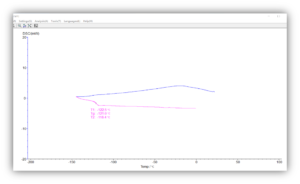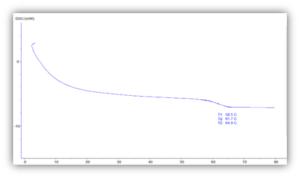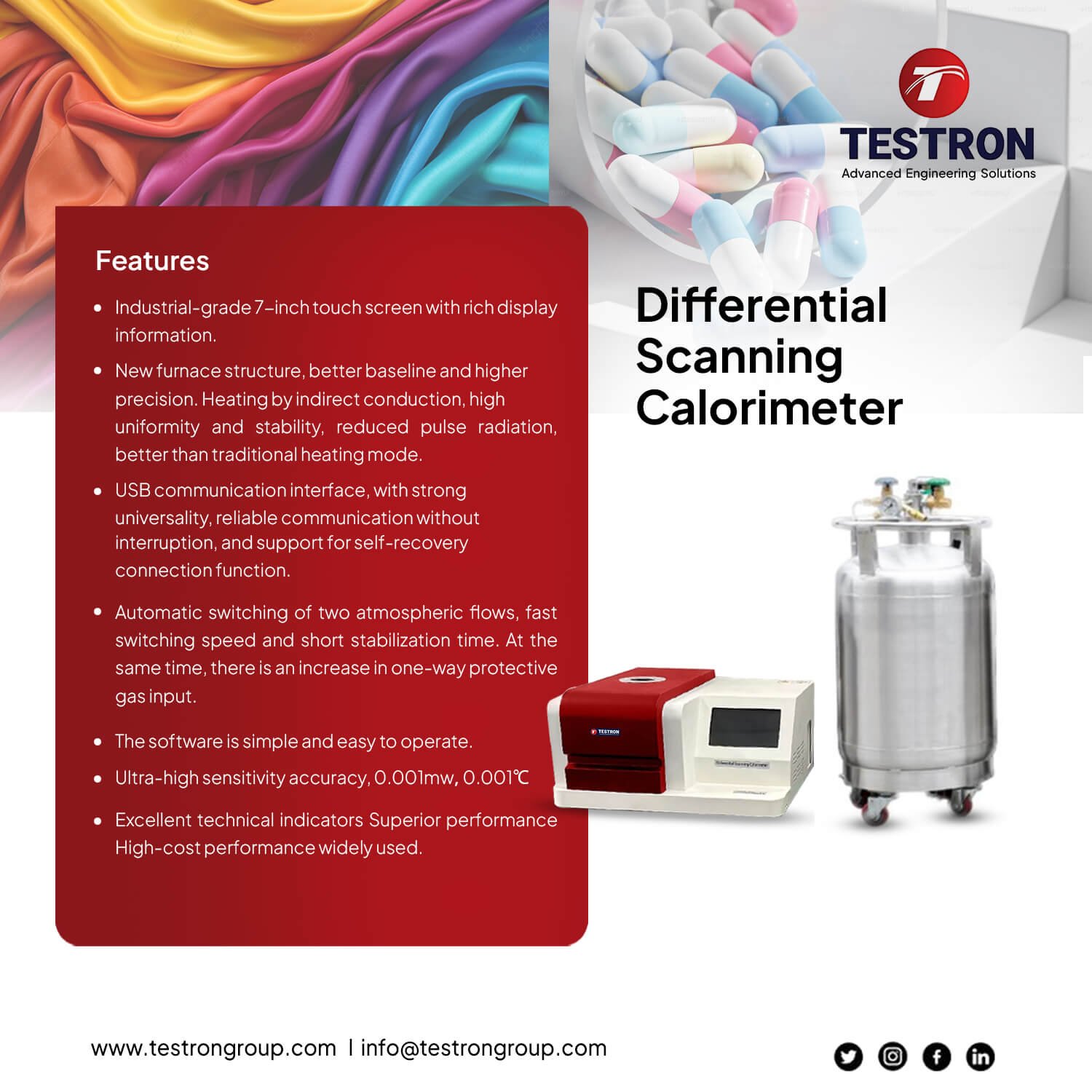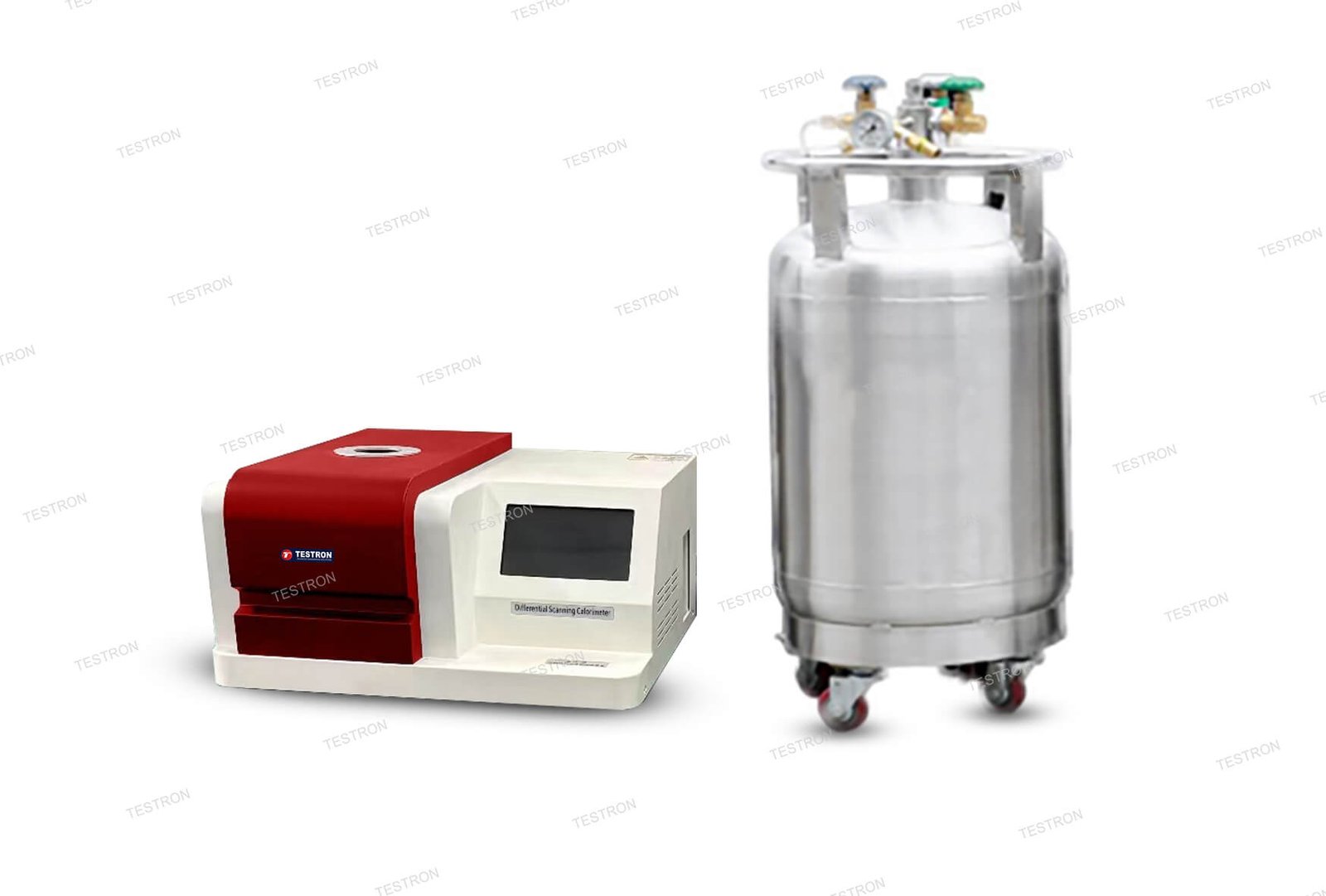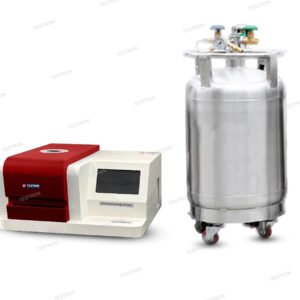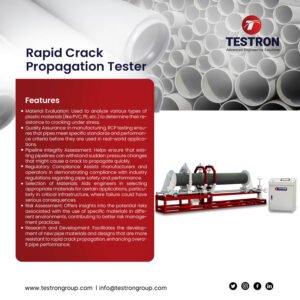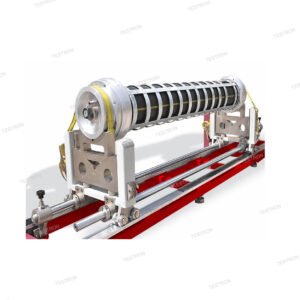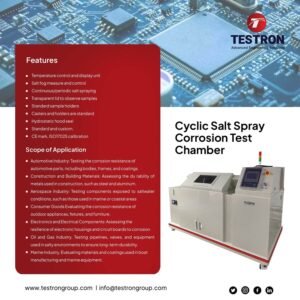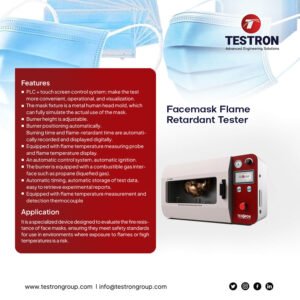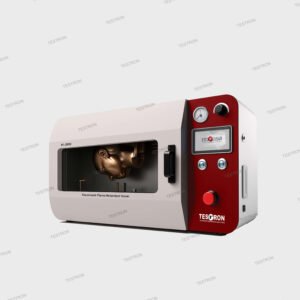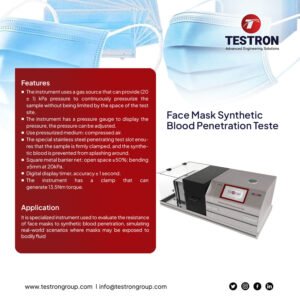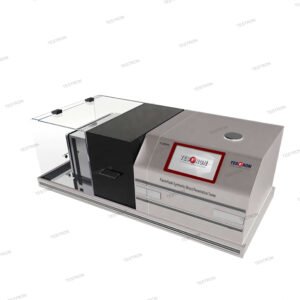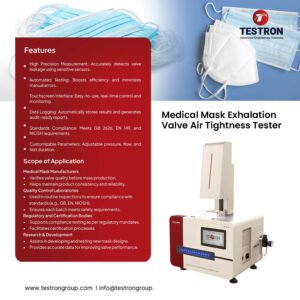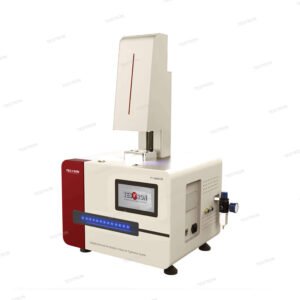Applications of TT-DSC300 Differential Scanning Calorimeter
TT-DSC300 differential scanning calorimeter can be used to test glass transition temperature, phase transition temperature, melting point, enthalpy value, curing temperature, product stability, oxidation induction period, etc. It is competent in the research of pipes, polymers, chemicals, food, medical treatment and many other fields, and its products serve universities, enterprises, third-party measurement and quality inspection units, with a wide range of applications to meet the testing needs of various industries
Features of TT-DSC300 Differential Scanning Calorimeter
- Industrial-grade 7-inch touch screen with rich display information.
- New furnace structure, better baseline and higher precision. Heating by indirect conduction, high uniformity and stability, reduced pulse radiation, better than traditional heating mode.
- USB communication interface, with strong universality, reliable communication without interruption, and support for self-recovery connection function.
- Automatic switching of two atmospheric flows, fast switching speed and short stabilization time. At the same time, there is an increase in one-way protective gas input.
- The software is simple and easy to operate.
- Ultra-high sensitivity accuracy, 0.001mw,001℃
- Excellent technical indicators Superior performance High-cost performance Widely used
Technical Specifications of TT-DSC300 Differential Scanning Calorimeter
| Model | TT-DSC300 |
| Temperature range | Room temperature 170~600℃ |
| Temperature resolution | 0.001℃ |
| Temperature fluctuation | ±0.01℃ |
| Temperature repeatability | ±0.1℃ |
| Heating rate: | 0.1~100℃/min |
| Incubation Time | Program setting ≤24h |
| Temperature control method | Heating up, constant temperature, cooling down (Full automatic program control) |
| DSC range | 0~±1000mW |
| DSC resolution | 0.01uW |
| DSC sensitivity | 0.001mW |
| Working Power Supply | AC220V/50Hz or customized |
| Atmosphere control gas | Nitrogen, oxygen (Program setting/automatic switching) |
| Gas flow | 0-200mL/min |
| Gas pressure | 0.5MPa |
| Display mode: | 24bit color, 7-inch LCD touch screen display |
| Data interface | Standard USB interface |
| Parameter standard | Equipped with reference materials (Sn),The user can correct the temperature by himself |
- The instrument has multiple sets of thermocouples, Temperature of a group of measured samples, one group to measure furnace temperature, one group measures the internal ambient temperature.
- The instrument has a multi-point calibration function, which can meet the precise test of high, medium and low samples
- The software can set the frequency of data collection and can export excel data and PDF reports.
Technical Process of TT-DSC300 Differential Scanning Calorimeter
- Oxidation period test of PE, PPR and other pipes
Oxidation induction time (OIT) was measured by DSC (differential scanning calorimeter). The sample is usually heated to the specified temperature and constant temperature under nitrogen atmosphere and then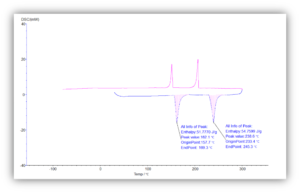 switched to oxygen atmosphere. After a period, the material begins to oxidize and release heat. The released heat is detected by the sensor, and the induced oxidation time (OIT) is obtained through software analysis. The length of the oxidation induction time is a parameter of the oxidation decomposition resistance of the reaction material, which is still very meaningful. Usually, the parameter must be detected for buried plastic pipes.
switched to oxygen atmosphere. After a period, the material begins to oxidize and release heat. The released heat is detected by the sensor, and the induced oxidation time (OIT) is obtained through software analysis. The length of the oxidation induction time is a parameter of the oxidation decomposition resistance of the reaction material, which is still very meaningful. Usually, the parameter must be detected for buried plastic pipes.
- Glass transition test of resin and other materials
For amorphous polymers, when the polymer changes from a high elastic state to a glass state through cooling, or from a glass state to a high elastic state through heating, the process is called the glass transition, and the temperature at which the glass transition occurs is called the glass transition temperature. For crystalline polymers, the glass transition refers to the transition of the amorphous part from the high elastic state to the glass state (or the glass state to the high elastic state). Therefore, glass transition is a common phenomenon in polymers. However, the glass transition phenomenon is not limited to polymers, and some small molecular compounds also have glass transition.
